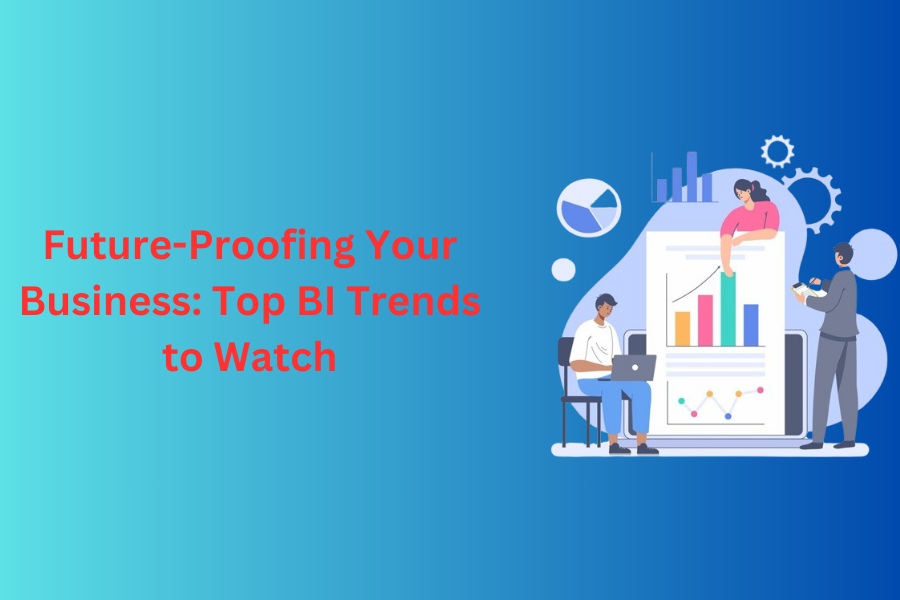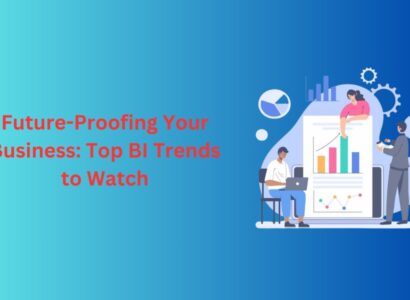Understanding Business Intelligence
Business intelligence describes a spectrum of technologies, applications, strategies, and designs used to grab business information and make it integrally usable. BI targets informed decision-making, in which reliable data provides the basis for insights and facts for managers’ decisions. In effect, BI systems enable an organization to collect, store, upload, and assess data, thus helping in decision-making. Business intelligence services are not only a tool for creating simple data reports but also a great business asset for company decision markers. It is one of the complex systems where businesses can study trends, extrapolate forecasts, and make the right decisions to improve productivity and increase performance. They are the tools that can easily handle any data type, from historical and current to third-party and in-house. Hence, you will have a complete picture of your business performance.

Why BI is Important for Businesses
- BI is a tool that turns complex data into reports that can then be used to make decisions. This is done using evidence, not intuition.
- It identifies slack, gaps, and optimization possibilities, which can lead to cost reductions and performance improvements.
- BI tools analyze customers’ behavior and interests, enabling businesses to deliver customers the most valuable products and services.
- Businesses can point out trends and opportunities through the Business Intelligence Resorts insight before their competitors.
- Implementing BI in organizations effectively makes all processes, from decision-making to operations, aimed at general growth.
- Risk analysis in the BI process minimizes disruptions and failures by providing the organization with better preventive and mitigative measures.
- AI includes the growth and predictive analytics of the BI as it helps organizations detect impending trends and adjust accordingly.
Business Intelligence Trends To Watch in 2024
Data Governance: This is all about an institution guaranteeing that data is managed systematically throughout life. It means setting the rules of data access, how it will be processed, and safety measures. Data governance is indispensable for maintaining data quality, establishing standard benchmarks, and achieving consumer and stakeholder trust. Modern BI procedures now include cost-effectiveness features such as machine learning and data classification and the ability to monitor and manage data in real time to ensure organizations abide by data governance policies and guidelines.
Collaborative Business Intelligence: Our world of collaboration is now more global. Collaborative BI is all about breaking the divisions that have existed traditionally between teams and letting them respond to the data the shared insights produce and make decisions on the perception of the data. The trend implies making connections on BI tools with several collaborative platforms, such as social media, to provide a communication channel where knowledge can be shared easily. In-time alerting systems and workflow automation are the two additional elements of collaboration that make sure that teams stay in touch and can take direct action when required.
Self-Service Business Intelligence: Previously, getting hold of data to analyze and do analysis took professionals with specialized skills, and they’d wait a long time for ICT support. Traditionally, business decisions used to be made after the manual interpretation of BI by in-house IT specialists. However, today, self-service BI puts the power of such analysis tools directly into the hands of business users. Now, personnel from all different organizational levels can use data easily using user-friendly tools and the new interfaces and present information visually or conclude depending on their capabilities without getting assistance from IT specialists. The democratization of data in the hands of corporations enables them to turn around decisions at an even pace and be more informed.
Augmented Analytics: Artificial intelligence and machine learning algorithms are employed to elevate the data analytics brand through augmented analytics. Augmented analytics is all about automating tasks such as data preparation, pattern recognition, and insight generation, which enables organizations to turn data into insights more quickly and accurately. It is of benefit primarily to organizations that deal with both large and complex data sets. These data sets might contain patterns or trends that are too intricate for humans to detect.
Data Visualization: People are visual creatures, and data visualization takes advantage of this visual concept by transforming information into a graphical layout that is understandable and interpretable. Today’s BI systems offer a rich palette of visualization options that go far beyond basic scatterplots and dancing to accelerometer-scanning virtual reality apps. The visualizations presented not only increase accessibility and involve users in presented information but also allow for finding trends and patterns more efficiently, therefore allowing for better-informed decision-making.
Mobile Business Intelligence: As remote work and mobile technology are growing more comprehensive, the need for mobile devices that can access and interact with data is getting significant. Mobile BI tools are meant to provide a hassle-free reason while using phones and tablets, encompassing aspects such as responsive design, offline access, and real-time alerts. Additionally, the benefit of this trend is that it builds a conducive atmosphere where employees can be geographically dispersed but still make timely and quality decisions that enhance productivity and agility in the business.
Data Literacy: Data literacy, then, is the power to tell the story that the data present through the significant practices of looking at and, understanding, and communicating data effectively. We live in a data-driven world and can reach accurate conclusions and activate the business if people are data literate. Companies are spending a lot of money to create data literacy programs to enable every colleague within different divisions of the company to work with data independently and successfully. We will cover topics such as data management analysis tools, visualization techniques that ensure data integrity, and critical thinking practices for data interpretation.
Predictive Analytics: Predictive analytics is a data-driven method that carries forth past events or cases to predict future trends and events. The ability to spot patterns and relationships in the data will equip them with the knowledge to tell when customers are likely to make purchases and whether the market trends are going in the right direction or whether military performance is at the desired level. Predictive analytics facilitates business entities in seeing around the corners, seizing opportunities at the right time, and creating a headroom over their competitors who may be reacting rather than reacting.
Data Security: Data security is the practice that ensures that information does not get into the wrong hands, is not used unlawfully, and is inaccessible and unmodified or destroyed. In the age of data leakages and cyber security issues, organizations have a never-ending responsibility to adopt proactive steps to protect their data assets. One of the crucial activities is the implementation of solid security tools, including encryption, access controls, intrusion detection systems, and employee training on best security practices.
Blockchain-Driven Development: Blockchain technology allows for data storage and can be used as a decentralized and tamper-proof tool for sharing information. Organizations will be able to establish more robust security, transparency, and credibility of data by using blockchain, which is most evident in supply chain management, financial transactions, and identity verification. This trend is that relevance is significant for firms aiming to boost trust and collaboration in their BI processes.
Natural Language Processing (NLP): Natural Language Processing (NLP) is a subset of artificial intelligence (AI) that deals with the utilization of machines so that human-like text can be interpreted, understood, and even generated by them. In BI, NLP is completely different from query languages or interfaces. The end user can now query data and give commands using natural languages. This explains that dealing with the data in a simplified manner is possible for non-technical people. It also helps in the utilization and analysis of the data and democratizes the insight access to every user in decision-making.
Conclusion
Having up-to-date knowledge about the BI environment trend is basic, considering companies consider only one purpose: to be the leading brand in their category. Through the integration of such information perspectives, companies can acquire a a complete picture of the market. This strategy not only spells out data and analytics plans but also helps businessmen keep ahead of customer behavior shifts and market condition shifts, which leads them to be decisive and make more cautious and well-thought-out decisions.
New BI trends, including the execution of real-time analytics and AI-powered data resources, are beneficial for organizations in fulfilling their strategies that victoriously endure the passage of years. Executives must use these trends to secure process speed, make the production operation more cost-effective, and provide data value with better parameters. Thus they put their organizations to be on top, in a time when data is a very vital feature.


